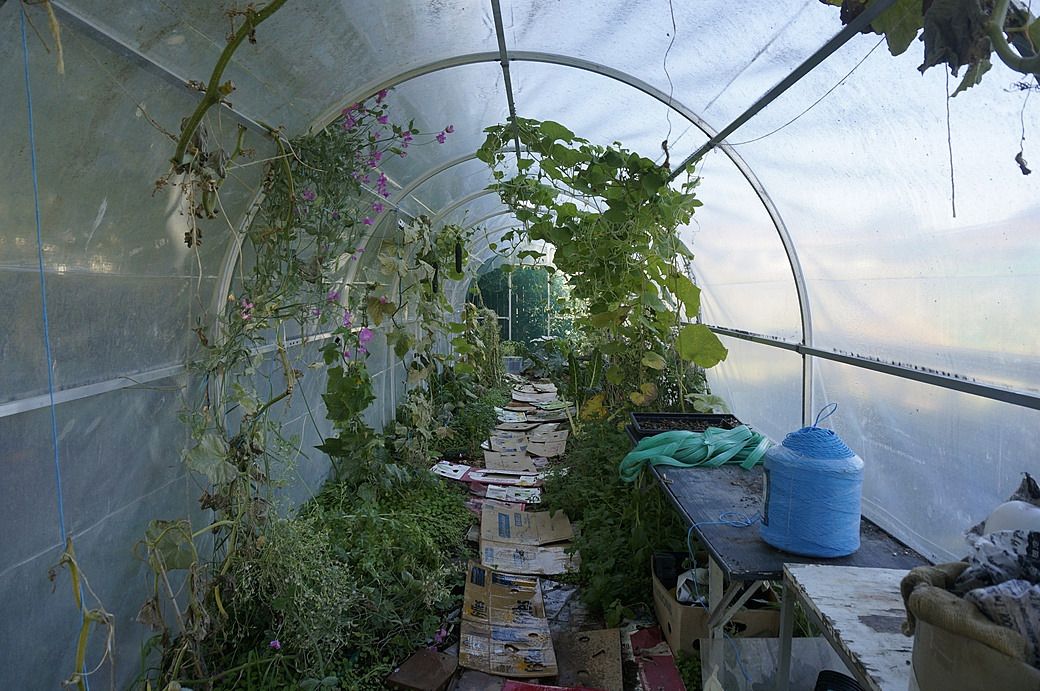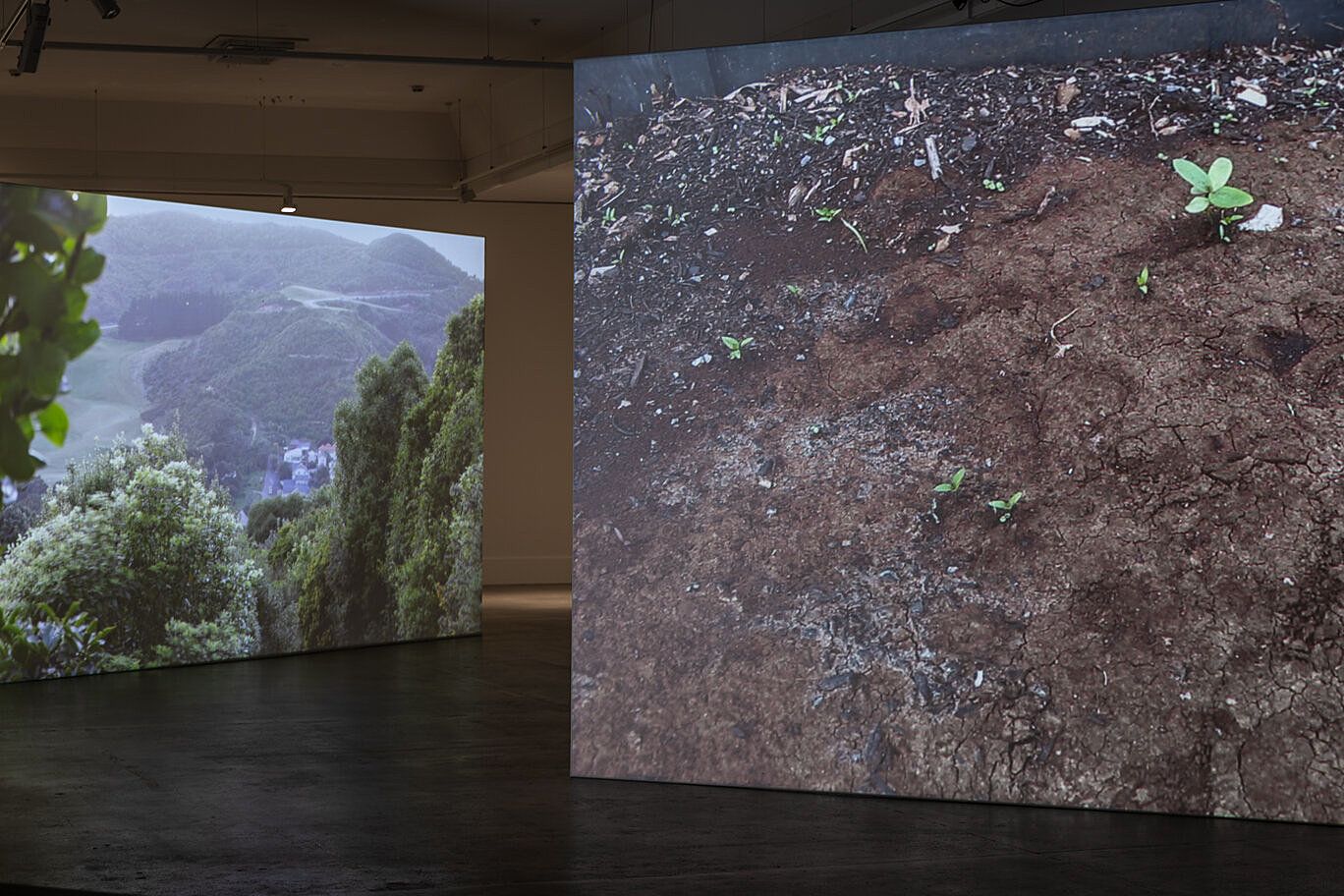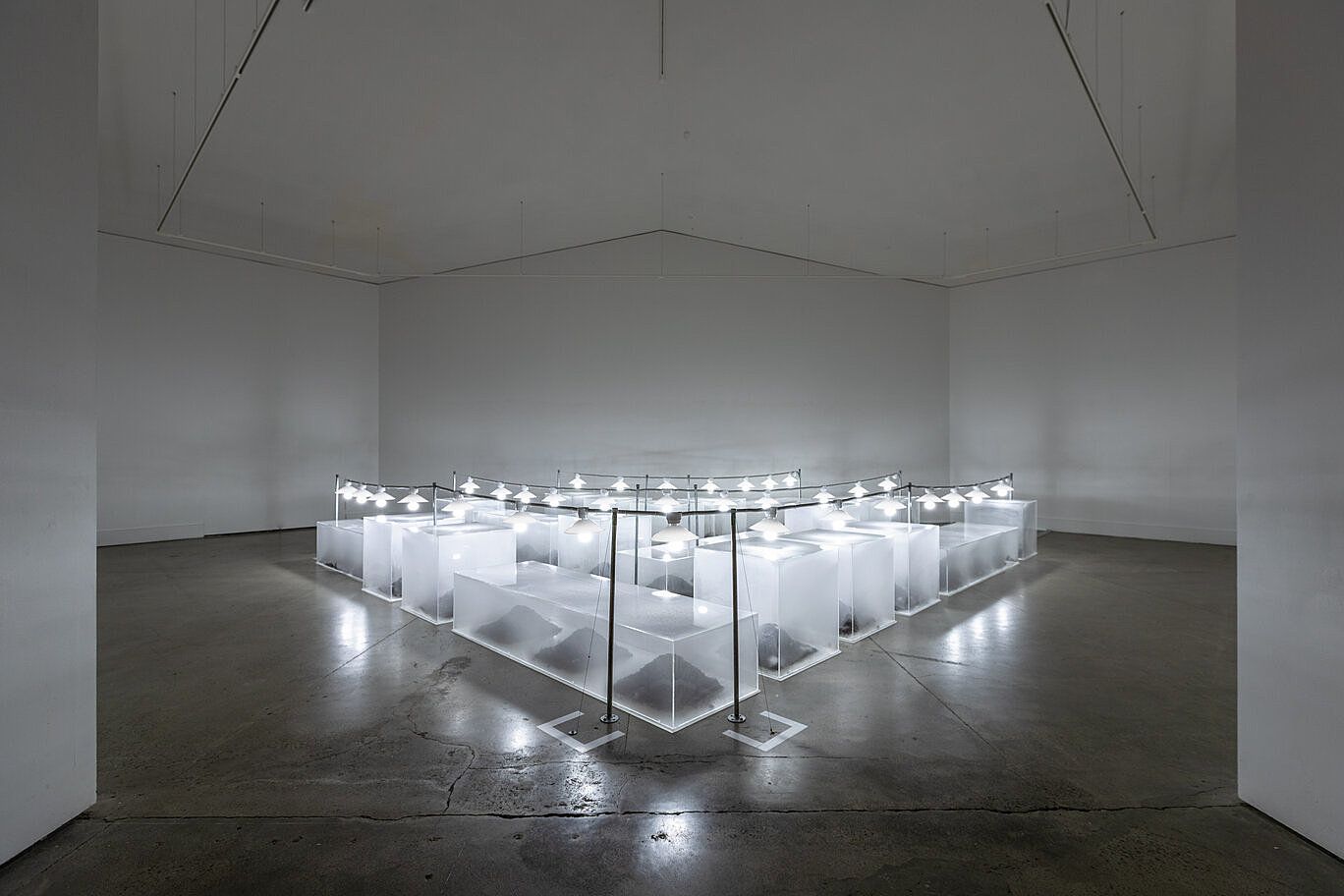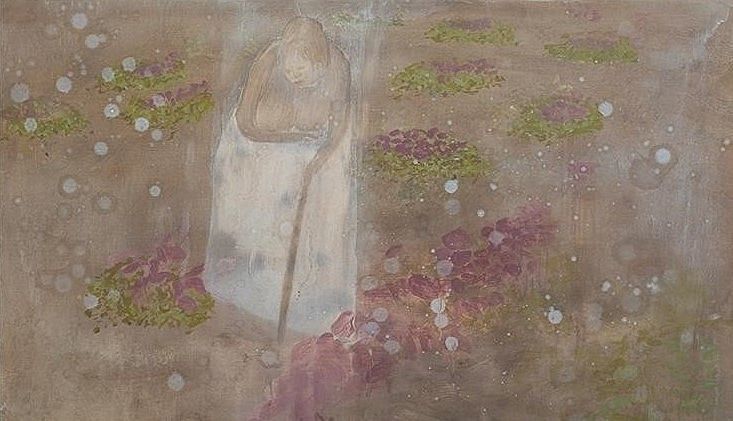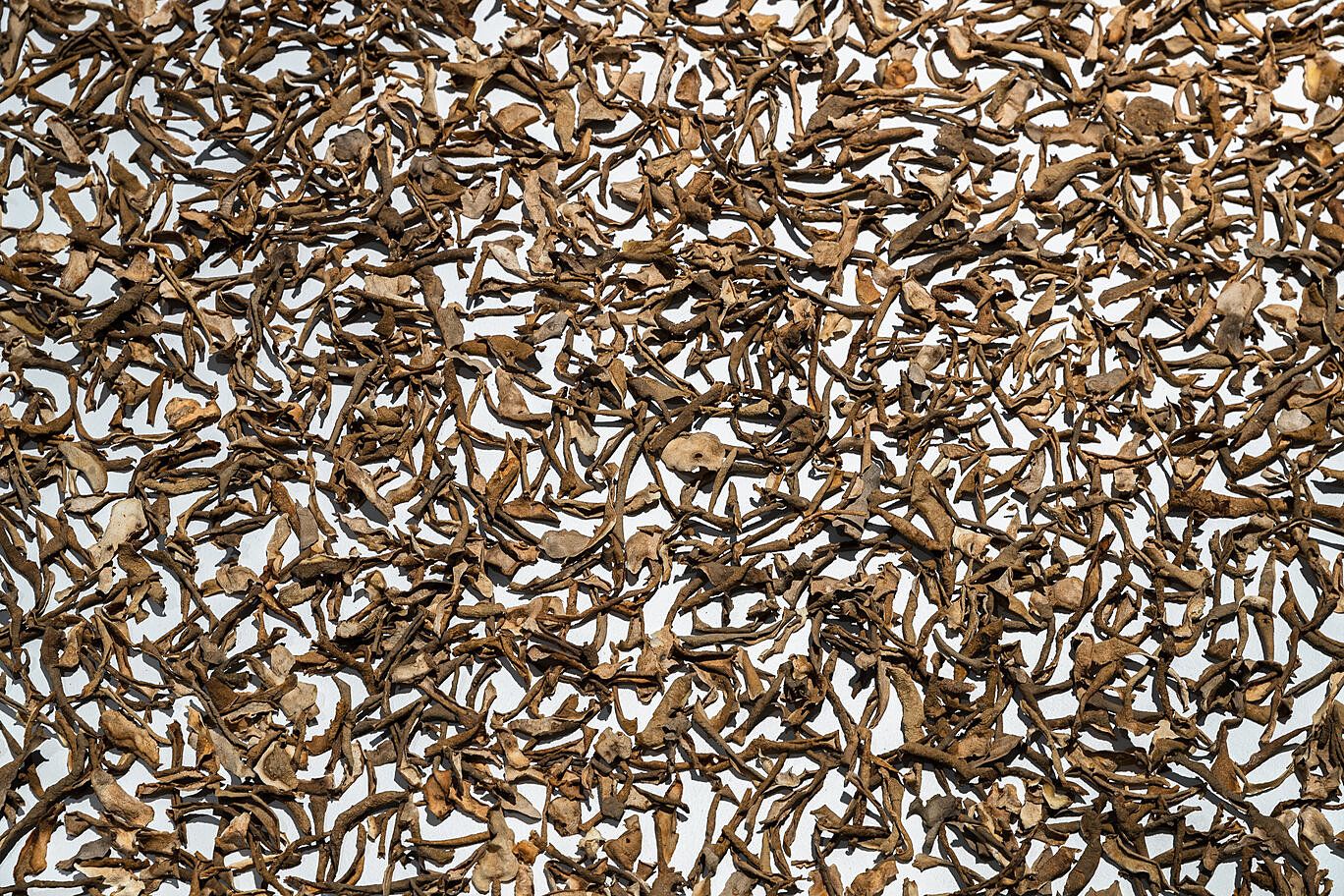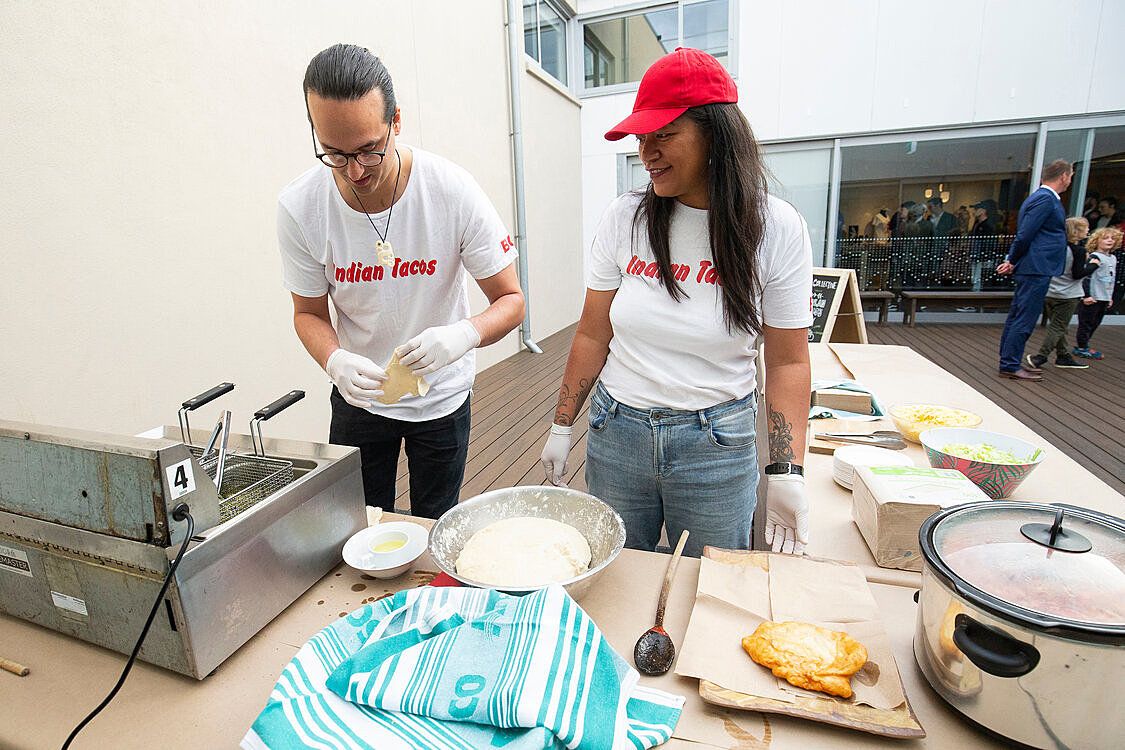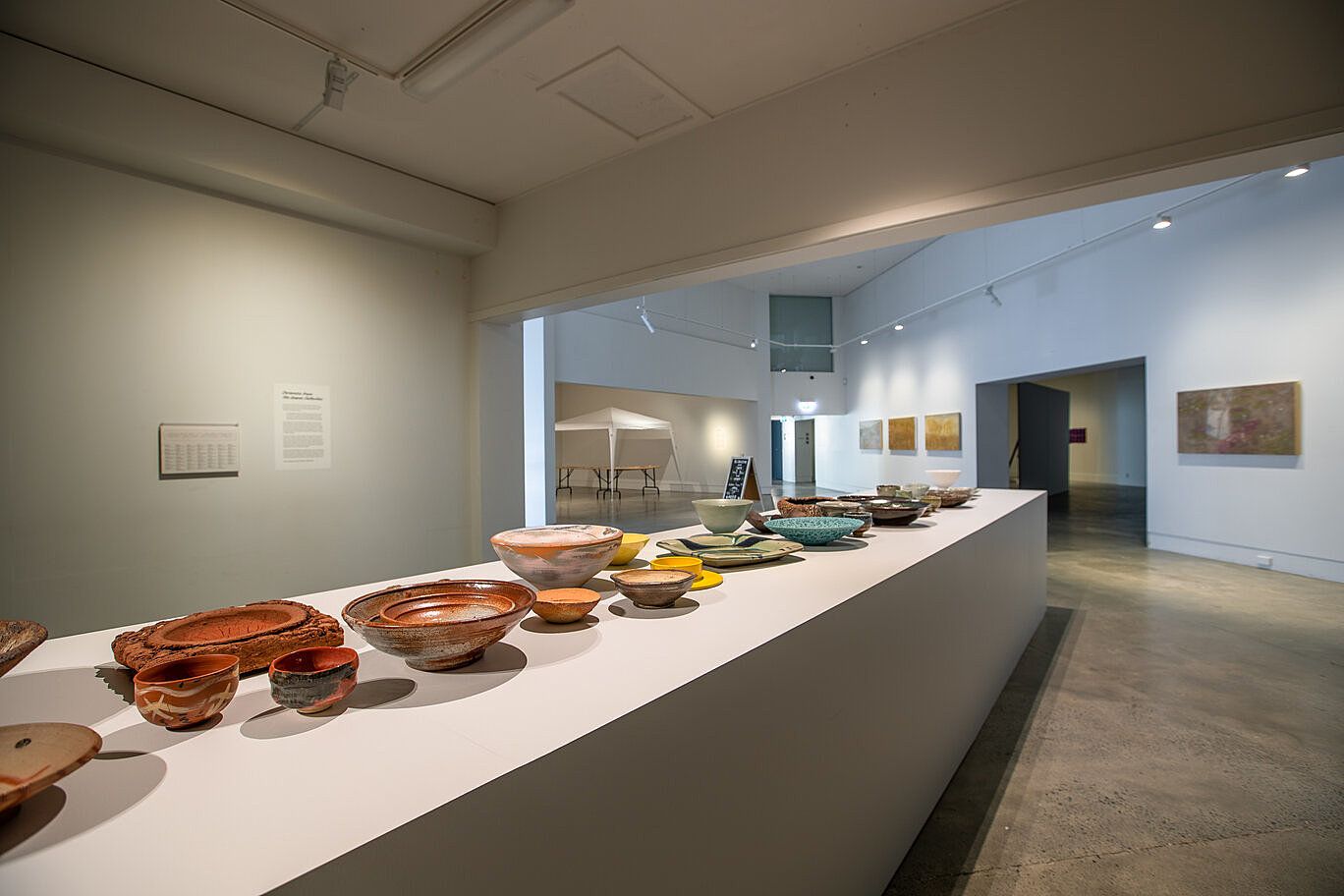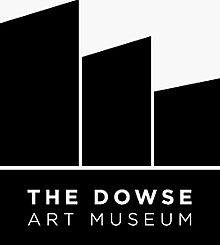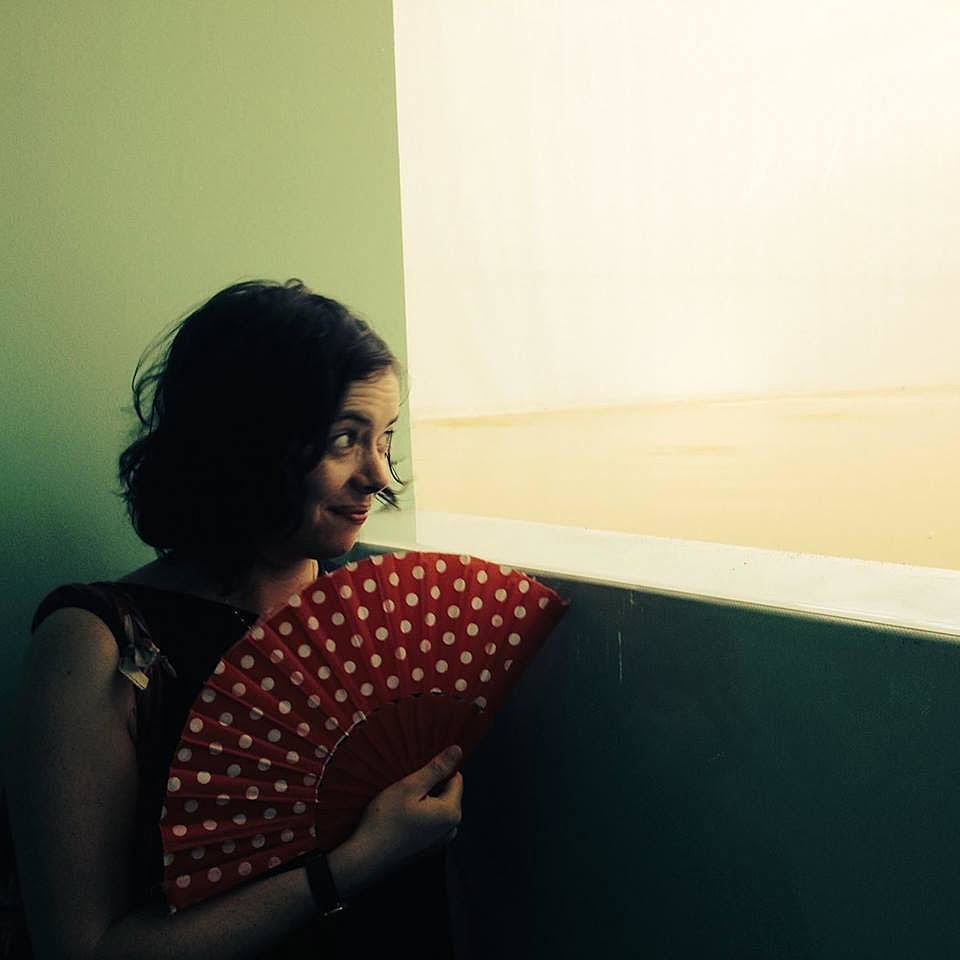Artists as Environmentalists: A Review of From the Ground Up
Art to save the planet and each other. Mia Gaudin reviews From the Ground Up: Community, Cultivation and Commensality at The Dowse.
When I enrolled in honours in art history in 2011, I proposed a research essay on ‘Art and the Environment’. Fresh from studying Green Legal Theory in Canada with one of the co-founders of Greenpeace, I was interested in how non-government players – neighbours, teachers, artists – could change people’s behaviours more effectively than top-down regulators. How were artists looking at the climate crisis? Food security? Over-consumption? What could they bring to an audience’s attention, and were they an integral part of activating communities?
“You mean land art?” a faculty member said to me, cocking their head to one side. Maybe they didn’t see how an inquiry into environmental activism would fit within the art history department, maybe I wasn’t good enough at explaining it. Either way, it didn’t feel like the right place to explore the thesis, so I dropped the degree and became a public servant instead.
In the subsequent decade, artists all over the world have tackled topics broadly situated under the heading of ‘the environment’. How could they not? As Mark Amery remarks in his recent review of Ann Shelton’s Mother Lode,“issues of climate change, sustainability and the slow decline of global capitalism have seen more artists shift to an active engagement with the relational space between plants and society”.
The recently opened group show at The Dowse,From the Ground Up: Community, Cultivation and Commensality,presents different ways of looking at the relationship between society, the environment and art practice. All with a focus on food: arguably the most habitual and intimate way of engaging with environmental action and politics.
Xin Cheng and Adam Ben-Dror, Making Like a Forest, 2020
Xin Cheng and Adam Ben-Dror’s Making Like a Forest video works introduce us to two local initiatives:Common Unity Project Aotearoa, a Te Awakairangi initiative that brings farming to schools and prisons,and Manawa Karioi,a reforestation project in Te Whanganui-a-Tara. Projecting the videos onto two large screens positioned at cross angles to each other, curator Grace Ryder has emulated the forest experience in the gallery, allowing visitors to walk around and between the screens and take a seat in their shadows.
The works are immersive and meditative. We see people planting seeds, collecting eggs from chickens, pulling leaves from brassicas. But the focus is never on people themselves, rather on their moments of connection with the earth – their hands untangling roots, their work boots in the mud. A voiceover talks about ecological relationships independent of humans – the green world, the flying world, the burrowing world working together. The camera moves slowly up the trunk of a young tree, hovers over lichen, follows a mesmerising slug as it makes its way across a piece of wood, but the wood itself is moving and suddenly hundreds of smaller bugs come into focus. Cheng and Ben-Dror are offering a means of paying attention to the world around us – something that, all too obviously, we don’t spend time doing in our busy lives.
Eventually, the Common Unity video cycles through to a compost bin where celery heads are mixed up with pumpkin skins and worms turn all this food waste to dirt – closing the loop and bringing us back to the themes of cultivation and commensality. Which brings us to potatoes.
Hōhua Thompson, Te kete rokiroki, 2020
Three artists in the show situate tubers at the centre of their work. Hōhua Thompson’s Te kete rokiroki (2020) shows the literal cultivation of kūmara in the gallery space – a large room is filled with perspex boxes lined up under lights, a reference to the Wardian cases used by Banks and Solander. Inside them are mounds of soil, which, by my second visit, are sprouting green shoots and the walls are dripping with condensation. It’s this self-generated water that keeps the plants alive and growing in their own atmosphere – a mini version of our own living, breathing planet – calling attention to the delicate hydrologic cycle we rely on to survive.
Aroha Gossage, Grandmother in Garden, 2020, oil on board
In a diagonal line across the gallery from Thompson’s site of cultivation are Aroha Gossage’s oil paintings depicting the artist’s whānau in their mara kai, planting, harvesting and storing kumara. The paintings are ethereal, and the wishy-washy paint gives a sense of condensation, as though we’re looking out through a steamy window or, more likely, the long murky lens of history. In Grandmother in Garden, a bare-chested woman isbending over with a cane amongst the field of kūmara, but the kūmara aren’t really grounded, instead they float backwards and forwards in the pane of the painting. Likewise, the grandmother hovers, her feet concealed by a white skirt, or maybe it's that they are buried deep in the soil.
Zoe Thompson-Moore, To feel with the hand (tickling potatoes), 2020
Tracing the diagonal line further, we arrive at Zoe Thompson-Moore's To feel with the hand (tickling potatoes) (2020). The tickling refers to the harvest – reaching into the soil to dig up dinner. The evidence of consumption is displayed on a long, low plinth: potato peels that have dried and appear delicate, like withered petals. The skins have been collected by the artist from people’s kitchens in her local community. The emphasis is on spending time in a domestic setting and exchanging recipes, stories, knowledge – a practice that will be explored through public programming, with more peels being added to the plinth.
.
BC Collective, Following the herd, 2020, making Indian tacos at the exhibition opening
The opportunity for public programming is particularly rich for this show, with its emphasis on knowledge exchange, community and commensality. Indeed, the work Following the herd (2020), from the BC Collective (Before Columbus, Before Cook), has invited and will continue to invite interaction. A sandwich board advertises ‘Indian tacos’ and a marquee shelters trestle tables laid with small ceramic plates adorned with sketches of buffalo. The work comes to life when the artists are present to make tacos and have an interaction with each patron – the taco becoming a way to talk about the painful history of Native American colonisation, offering a personable and impactful means of imparting information and engaging an audience.
Again, Ryder’s clever exhibition-making is at play. An impressive array of ceramics from The Dowse collection is displayed as though in a banquet hall, opposite the plates from Indian Tacos. A reminder that commensality – gathering and sharing over food – is at the heart of the show. But a more subtle link is made possible by looking below the surface and into the materiality – the earth, the dirt, the clay that these ceramics are made from renders them objects of cultivation. Just like Thompson’s kūmara, these ceramics, with the help of human intervention, are grown from the earth and provide a vessel from which we can consume its spoils.
Ceramics from The Dowse collection
From the Ground Up: Community, Cultivation and Commensality, while seemingly disparate in its range of different practices, successfully comes together around its stated themes. Running through to March 2021 and with public programming currently being developed, there is the promise of a summer of knowledge sharing, learning, activation of the works and audiences, and time for close examination of the environmental impact of food.
Perhaps it’s that close examination and perspective shifting that are an artist’s most potent tools for activating political and societal change. Intelligent work and a well-curated show provide a signal through the noise. And certainly, with the head of Massey’s Whiti o Rehua School of Art Dr Huhana Smith researching mātauranga Māori and climate change, and Victoria University’s Art History department recently appointing Susan Ballard, an Australian academic focusing on “the diverse ways that artists negotiate the ecological and social transformations of the twenty-first century”, we can expect to see much more work in this vein coming from those institutions and beyond. In fact, just this summer, Ballard is running a course titled Art and Environment. I think I’ll have to enrol.
From the Ground Up: Community Cultivation and Commensality
24 October 2020 — 7 March 2021
.
This piece is presented as part of a partnership with The Dowse. They cover the costs of paying our writers while we retain all editorial control.
Feature image: Xin Cheng and Adam Ben-Dror, Making Like a Forest, 2020
